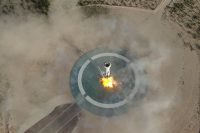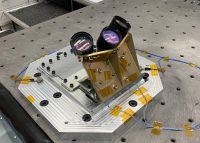The Apollo 11 landing ellipse, shown here, was 11 miles by 3 miles. Precision landing technology will reduce landing area drastically, allowing for multiple missions to land in the same region. (NASA)
Home The Apollo 11 landing ellipse, shown here, was 11 miles by 3 miles. Precision landing technology will reduce landing area drastically, allowing for multiple missions to land in the same region. (NASA) The Apollo 11 landing ellipse, shown here, was 11 miles by 3 miles. Precision landing technology will reduce landing area drastically, allowing for multiple missions to land in the same region. (NASA)




